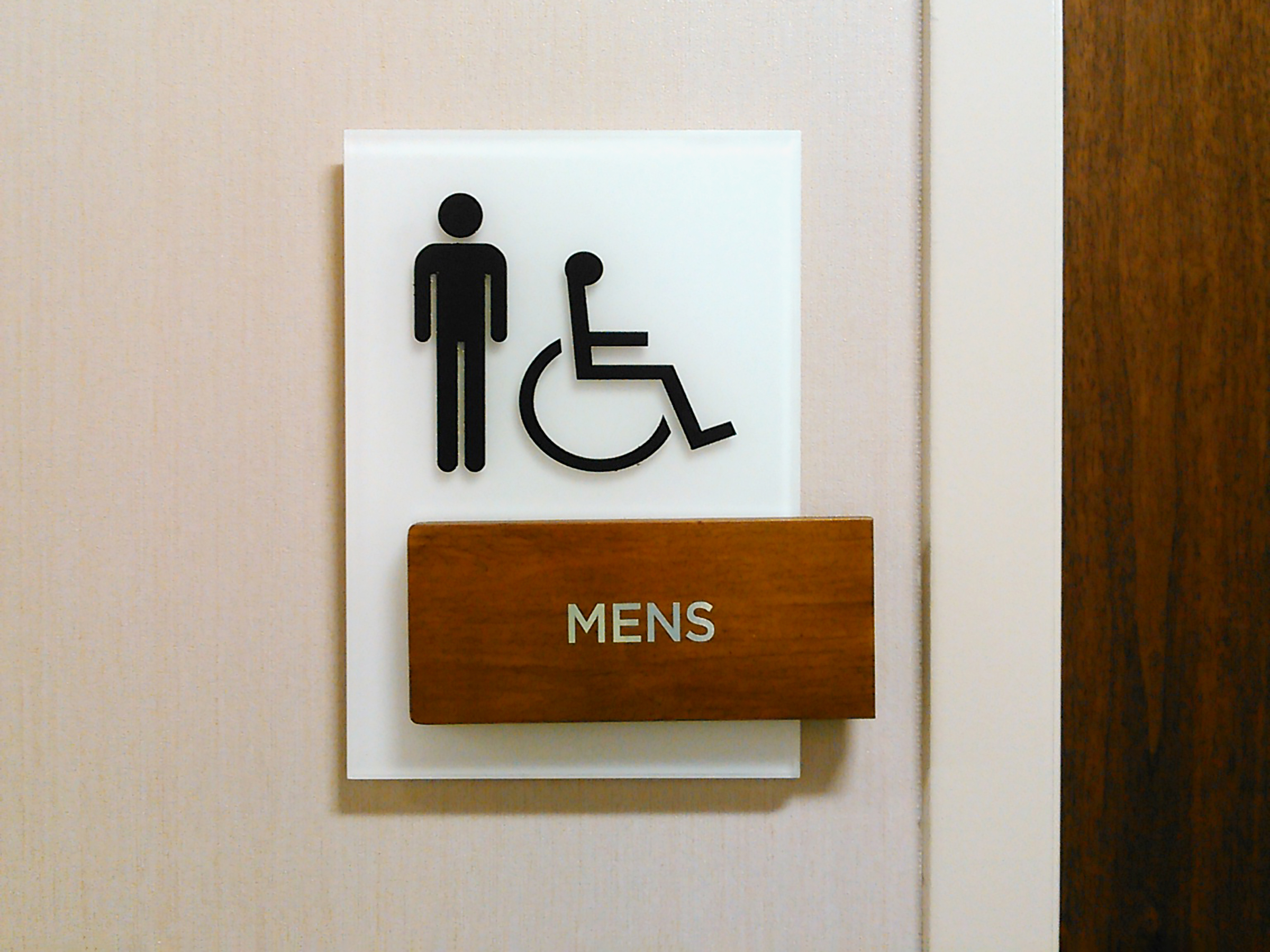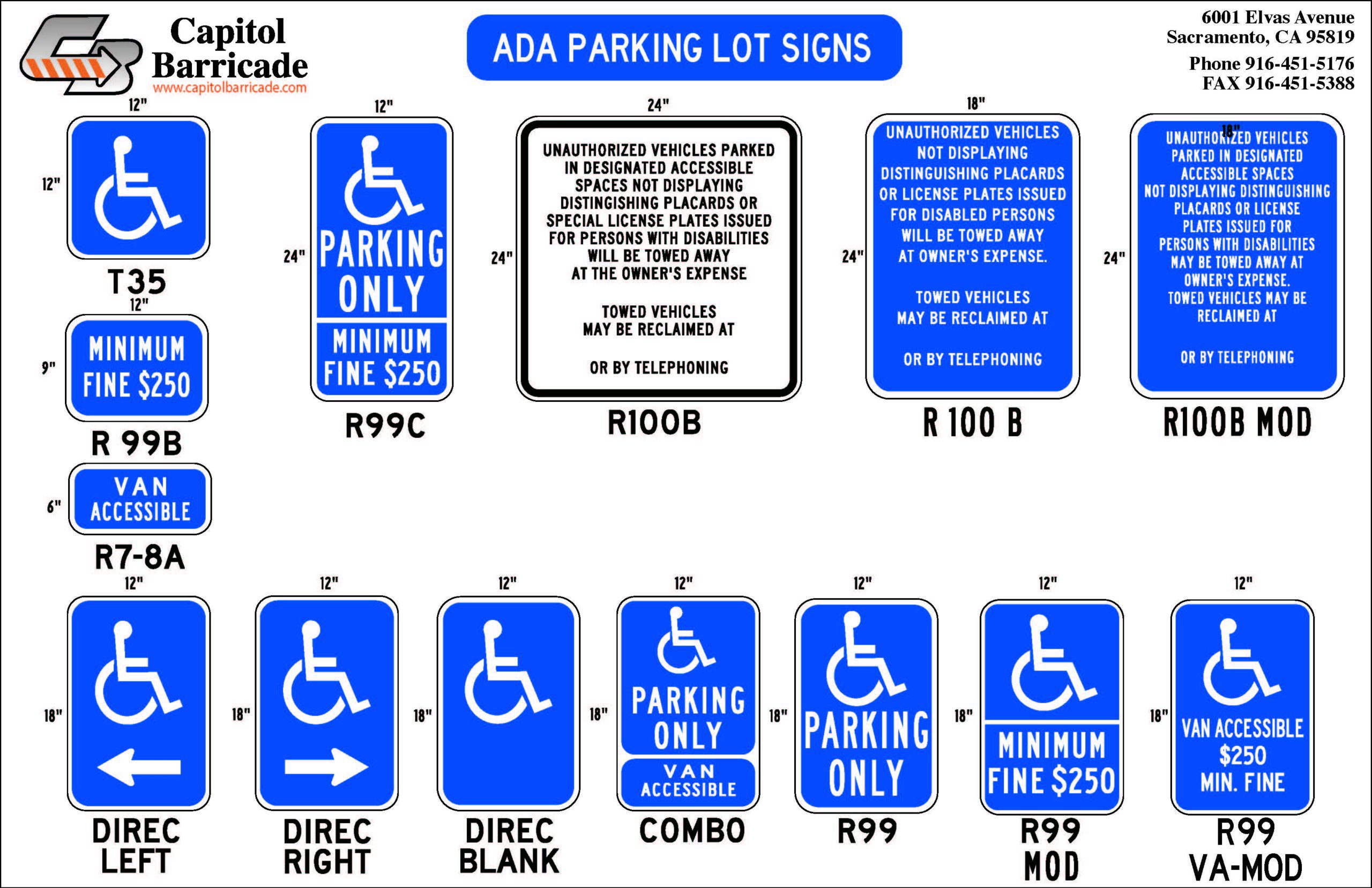Exactly How ADA Signs Enhance Accessibility for Everyone
Exactly How ADA Signs Enhance Accessibility for Everyone
Blog Article
Discovering the Key Attributes of ADA Indications for Improved Ease Of Access
In the world of accessibility, ADA indications work as silent yet effective allies, making certain that spaces are accessible and inclusive for individuals with impairments. By incorporating Braille and tactile elements, these indicators break barriers for the aesthetically damaged, while high-contrast color pattern and legible fonts satisfy diverse aesthetic requirements. In addition, their strategic positioning is not approximate but instead a computed effort to help with seamless navigation. Past these features exists a much deeper story regarding the advancement of inclusivity and the continuous commitment to creating equitable spaces. What more could these signs symbolize in our pursuit of global ease of access?
Importance of ADA Compliance
Guaranteeing conformity with the Americans with Disabilities Act (ADA) is important for fostering inclusivity and equivalent accessibility in public rooms and work environments. The ADA, established in 1990, mandates that all public facilities, companies, and transport solutions suit individuals with handicaps, guaranteeing they take pleasure in the very same rights and opportunities as others. Compliance with ADA criteria not only satisfies legal commitments but also boosts a company's reputation by showing its commitment to variety and inclusivity.
One of the crucial facets of ADA conformity is the implementation of available signage. ADA indications are made to ensure that individuals with handicaps can quickly browse with spaces and buildings.
In addition, adhering to ADA regulations can mitigate the risk of legal consequences and possible penalties. Organizations that stop working to abide by ADA guidelines might deal with lawsuits or fines, which can be both harmful and monetarily burdensome to their public picture. Thus, ADA compliance is essential to promoting a fair atmosphere for everybody.
Braille and Tactile Components
The consolidation of Braille and responsive elements right into ADA signage personifies the concepts of access and inclusivity. It is usually positioned beneath the equivalent message on signs to make sure that people can access the details without visual assistance.
Responsive elements prolong past Braille and include raised personalities and signs. These elements are made to be noticeable by touch, permitting individuals to recognize room numbers, restrooms, leaves, and various other essential areas. The ADA establishes certain standards relating to the dimension, spacing, and placement of these responsive components to optimize readability and make sure uniformity across various environments.

High-Contrast Color Schemes
High-contrast color design play a pivotal function in improving the exposure and readability of ADA signs for individuals with visual impairments. These plans are crucial as they make best use of the difference in light reflectance between text and background, guaranteeing that signs are quickly noticeable, also from a range. The Americans with Disabilities Act (ADA) mandates using details shade contrasts to fit those with restricted vision, making it an essential element of conformity.
The effectiveness of high-contrast shades hinges on their capacity to stand apart in different lighting conditions, consisting of dimly lit atmospheres and areas with look at this now glare. Typically, dark message on a light background or light text on a dark background is used to attain optimum comparison. As an example, black text on a yellow or white history gives a plain aesthetic distinction that assists in quick recognition and understanding.

Legible Fonts and Text Size
When thinking about the design of ADA signage, the choice of clear fonts and ideal message size can not be overstated. The Americans with Disabilities Act (ADA) mandates that fonts need to be not italic and sans-serif, oblique, manuscript, extremely ornamental, or of uncommon kind.
The size of the text likewise plays a pivotal function in ease of access. According to ADA standards, the minimal message elevation must be 5/8 inch, and it needs to increase proportionally with seeing distance. This is especially important in public rooms where signage requirements to be reviewed quickly and accurately. Uniformity in text size adds to a cohesive visual experience, assisting individuals in browsing environments effectively.
Additionally, spacing between letters and lines is essential to readability. Adequate spacing stops characters from appearing crowded, enhancing readability. By sticking to these requirements, developers can significantly enhance access, making certain that signage learn this here now serves its designated objective for all individuals, regardless of their visual capabilities.
Reliable Positioning Techniques
Strategic placement of ADA signage is crucial for making best use of accessibility and guaranteeing conformity with lawful criteria. ADA standards stipulate that signs need to be installed at an elevation between 48 to 60 inches from the ground to ensure they are within the line of view for both standing and seated people.
In addition, indicators must be placed nearby to the lock side of doors to allow easy identification prior to entrance. This Get More Info positioning helps people locate areas and rooms without blockage. In instances where there is no door, indicators need to be located on the nearest adjacent wall surface. Uniformity in sign positioning throughout a center enhances predictability, minimizing complication and boosting overall individual experience.

Conclusion
ADA indicators play an essential role in promoting accessibility by integrating attributes that attend to the needs of individuals with handicaps. These aspects jointly cultivate a comprehensive setting, underscoring the value of ADA compliance in guaranteeing equivalent access for all.
In the realm of accessibility, ADA indications serve as silent yet powerful allies, making certain that spaces are accessible and comprehensive for individuals with impairments. The ADA, established in 1990, mandates that all public facilities, employers, and transportation solutions fit individuals with specials needs, guaranteeing they appreciate the same rights and opportunities as others. ADA Signs. ADA indicators are created to make sure that people with impairments can conveniently browse via buildings and areas. ADA guidelines state that signs need to be placed at an elevation in between 48 to 60 inches from the ground to ensure they are within the line of sight for both standing and seated individuals.ADA indications play an essential function in promoting ease of access by incorporating features that attend to the demands of people with disabilities
Report this page